Seventy years ago, the atomic bombs known as Little Boy and Fat Man were dropped on Hiroshima and Nagasaki. In Hiroshima about 90,000 people were killed immediately; another 40,000 were injured, many of whom died in protracted agony from radiation sickness. Three days later, a second atomic strike on the city of Nagasaki killed some 37,000 people and injured another 43,000. Together the two bombs eventually killed an estimated 200,000 Japanese civilians. Was there really a need to create this nightmare? Did this nuclear onslaught really oblige Japan to surrender? This is too touchy a subject for public discussion in the US, which gives the rest of the world the right to ask Washington some uncomfortable questions.
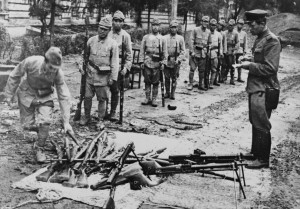
Q1
The United States dropped two nuclear bombs on Japan, a third, according to Brigadier General Leslie Groves, the director of the Manhattan Project, could have been ready for delivery by August 17 or 18, and a fourth by September 1945. But the American military command never canceled its training exercises for Operation Downfall – the ground invasion of the Japanese islands. How many Japanese cities would have eventually been incinerated by the Americans if, over the course of 12 days (Aug. 9-20, 1945) in Manchuria, the Soviet Union had not wiped out the Kwantung Army, the biggest command within the Japanese army, with over one million troops, and thus forced the surrender of Emperor Hirohito?
Q2
By August 1945, the US Air Force had been terrorizing Japanese cities using conventional bombs for several months. The aftermath of that was as calamitous as the fate of Dresden and Hamburg. 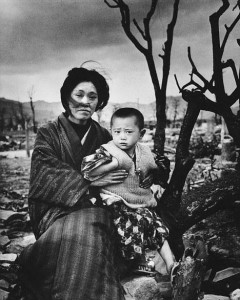 Little already remained of Tokyo long before the attacks on Hiroshima and Nagasaki. If the intent was to destroy tactical targets (and Hiroshima was one of the largest military centers provisioning the Japanese army and navy), would it not have been better to have gone about it using conventional weapons? The fact that Nagasaki was targeted almost at random (the plane originally flew to Kokura, but because of cloud cover it was unable to release its payload and turned toward Nagasaki instead), proves that the nuclear bombing of Japan was simply committed in order to terrorize the country. Originally the chosen targets for the attack were Niigata (a military base and industrial center), Yokohama (an industrial center), Kokura (which held the largest arsenal and warehouse), and Kyoto (also an industrial center). Kyoto was eliminated from the “list of death” because of its historical value thanks to some American generals who used to attend it before the war.
Little already remained of Tokyo long before the attacks on Hiroshima and Nagasaki. If the intent was to destroy tactical targets (and Hiroshima was one of the largest military centers provisioning the Japanese army and navy), would it not have been better to have gone about it using conventional weapons? The fact that Nagasaki was targeted almost at random (the plane originally flew to Kokura, but because of cloud cover it was unable to release its payload and turned toward Nagasaki instead), proves that the nuclear bombing of Japan was simply committed in order to terrorize the country. Originally the chosen targets for the attack were Niigata (a military base and industrial center), Yokohama (an industrial center), Kokura (which held the largest arsenal and warehouse), and Kyoto (also an industrial center). Kyoto was eliminated from the “list of death” because of its historical value thanks to some American generals who used to attend it before the war.
Q3
It took Emperor Hirohito and his war cabinet a long time to obtain a reliable assessment of the scale of the incident and to make a political decision based on the aftermath of the first bombing. Tokyo only learned about the use of these previously unknown weapons of mass destruction thanks to American radio broadcasts. The emperor was far more concerned about the attitude of Soviet Union regarding the war in the Far East. The emperor was ready to surrender back in May 1945, but not unconditionally like Germans. He wanted an honorable surrender that would safeguard his regime (what subsequently happened) and army. His trump card in the political bartering was the existence of the still viable Kwantung Army. This, and not the mythical “hundreds of thousands of kamikaze pilots,” posed the biggest threat to the Allies. If the Kwantung Army had not suffered a crushing defeat Japan could have held out a few more months. But the Allies would have found themselves embroiled in massive operations on mainland China, something for which the US was not ready.  The USSR’s entry into the war against Japan on Aug. 9, 1945 had a decisive impact on Japan’s decision to capitulate. That same day, Japan’s prime minister, Kantarō Suzuki, declared at the meeting of Supreme Military Council:
The USSR’s entry into the war against Japan on Aug. 9, 1945 had a decisive impact on Japan’s decision to capitulate. That same day, Japan’s prime minister, Kantarō Suzuki, declared at the meeting of Supreme Military Council:
…the entry of the Soviet Union into the war this morning puts us in a completely helpless position and makes continuation of the war impossible…
(Richard Hart, “Towards Decolonisation”, p.313)
Four days later, when the fate of the Kwantung command was almost a foregone conclusion, Emperor Hirohito decided to surrender. So what most affected his decision – the panicked reports from his military commanders in Manchuria or an American radio broadcast?
Q4
Neither President Truman, the US military, nor the rest of the world fundamentally grasped the consequences of the atomic bombardment. Of course, the scientists who created the bomb could theoretically imagine what its effect might be. 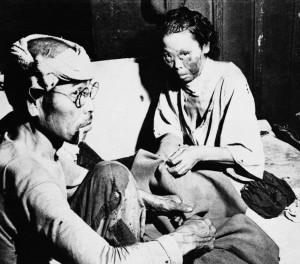 But the practical aspects behind the use of nuclear weapons, as well as the basic principles for how they were to be managed, developed only after seeing the impact of the bombing of Hiroshima and Nagasaki. Only then did an understanding evolve of the mechanism behind the spread of the shock-, light-, heat-, and electron waves, and only then did it become possible to forecast the damage by studying the landscape and weather. Effects of radiation were studied years later, based on observations of the “hibakusha” – the more than 200,000 people who were afflicted by the fallout. So is it possible that at that time the US was simply tempted to conduct an experiment on the civilian population of its wartime opponent, merely in order to make some adjustments to its scientific records?
But the practical aspects behind the use of nuclear weapons, as well as the basic principles for how they were to be managed, developed only after seeing the impact of the bombing of Hiroshima and Nagasaki. Only then did an understanding evolve of the mechanism behind the spread of the shock-, light-, heat-, and electron waves, and only then did it become possible to forecast the damage by studying the landscape and weather. Effects of radiation were studied years later, based on observations of the “hibakusha” – the more than 200,000 people who were afflicted by the fallout. So is it possible that at that time the US was simply tempted to conduct an experiment on the civilian population of its wartime opponent, merely in order to make some adjustments to its scientific records?
Q5
There are no real reasons to believe that if the war had continued with the use of conventional weapons this would have resulted in the catastrophic level of casualties that were predicted by the US General Staff and President Truman. 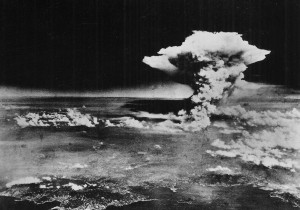 Only on two islands – Saipan and Okinawa – did the Japanese offer their most fierce and fanatical resistance. Of course, the mind-boggling kamikaze deaths remained a perplexing headache for America’s pragmatic admirals. However, the rapid annihilation of the Kwantung Army, as well as the Soviets’ amphibious operations in Korea and the Kuril Islands (these landings differed little from those conducted during America’s offensive operations, but were better organized), proved that notorious “Japanese morale” had already dissipated. So, who was Washington intending to intimidate – the demoralized Japanese or its future opponent in the Cold War, i.e. the Soviet Union?
Only on two islands – Saipan and Okinawa – did the Japanese offer their most fierce and fanatical resistance. Of course, the mind-boggling kamikaze deaths remained a perplexing headache for America’s pragmatic admirals. However, the rapid annihilation of the Kwantung Army, as well as the Soviets’ amphibious operations in Korea and the Kuril Islands (these landings differed little from those conducted during America’s offensive operations, but were better organized), proved that notorious “Japanese morale” had already dissipated. So, who was Washington intending to intimidate – the demoralized Japanese or its future opponent in the Cold War, i.e. the Soviet Union?
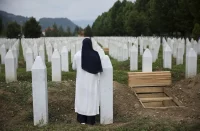

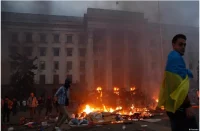











Pingback: Are Russians in for war? | Oriental Review
Pingback: Are Russians In For Yet Another War? | Web02003
Pingback: Are Russians In For Yet Another War? |
Pingback: Waarom Amerika niet voor vrede koos…….. Tot drie keer toe wilde Rusland aansluiting bij het westen, bij de NAVO, maar de V.S. weigerde! | Silvia's Boinnk!!!
Pingback: Are Russians In For Yet Another War? - ValuBit
Pingback: 1945 Nazi crackdown: yes, we can reshow it! | Oriental Review
Pingback: Ce que nous avons infligé aux nazis en 1945, oui, nous pouvons le refaire ! | Réseau International
Pingback: War of the worlds: masks are ripped away in Syria | Oriental Review
Pingback: War Of The Worlds: Masks Are Ripped Away In Syria | Globe Live News
Pingback: War Of The Worlds: Masks Are Ripped Away In Syria | It's Not The Tea Party
Pingback: War of the worlds: masks are ripped away in Syria | |
Pingback: La guerra de los mundos: las máscaras fueron arrancadas en Siria. | PSOB1
Pingback: “Operation Unthinkable” (1945) And U.S.-N.A.T.O.’s Threats To Wage War On Russia
Pingback: Unite and Rule: EU as NATO’s Auxiliary Economic Alliance – OrientalReview.org
Pingback: Unite and Rule: EU As NATO's Auxiliary Economic Alliance | ValuBit News
Pingback: Unite and Rule: EU As NATO’s Auxiliary Economic Alliance – Independent News Media
Pingback: L’Europe d’une guerre à l’autre (XIX) – Comment Churchill a perdu et récupéré sa victoire dans la Seconde Guerre Mondiale | Réseau International
Pingback: The Unacceptable Risks of Trump’s Nuclear Strategy | OrientalReview.org
Pingback: The Unacceptable Risks of Trump’s Nuclear Strategy – aladdinsmiraclelamp
FDR’s Sec of Navy James Forrestal worked his Catholic connections with Japan to arrange a Japan surrender months before the Bombs were dropped. Forrsetal’s surrender deals were ignored by Truman. Forrestal, being a Catholic like the Kennedys did not get along well with the Imperialist Masons like Truman, who followed in lock-step with Churchill to set off the “Cold War” via their insatiable need to demo the BOMB to Russia. Many consider that FDR was poisoned to slide in Imperialist Mason Truman and reverse all FDR’s plans to take down England and partner with Russia and Stalin. Forrestal was a thorn in the Masonic side of Truman, so much so that Forrestal was shoved out the window of Bethesda Hospital in DC in 1949.
James Forrestal and John Kennedy were big buddies and toured Germany ahead of the war. It was most likely the Forrestal insights that allowed JFK to determine the White House via Masonic Truman had the US taken over from within by English Imperialism and JFK did not like Truman, nor his super corrupt CIA, or his Zionism games that stuck JFK with a difficult proliferation issue.
A similar fate would befall JFK as he followed the thinking of FDR and sought peace with Russia, kicking the Fed Res out of control of the US money system, needed to stop middle east nuclear proliferation, and he was going to cut Truman’s corrupt Imperialism backing CIA in a million pieces. So, another Catholic gets killed via a good deal of Masonic rigging, CIA, and the Zionist Mafia.
Pingback: Are the “Bad Russians” In For But Another (Very hot or Cold) War? How did Former Allies grow to be Adversaries? – Viralmount
Pingback: ‘Operation Unthinkable’ (1945) and US-NATO’s threats to wage war on Russia | Tony Seed's Weblog